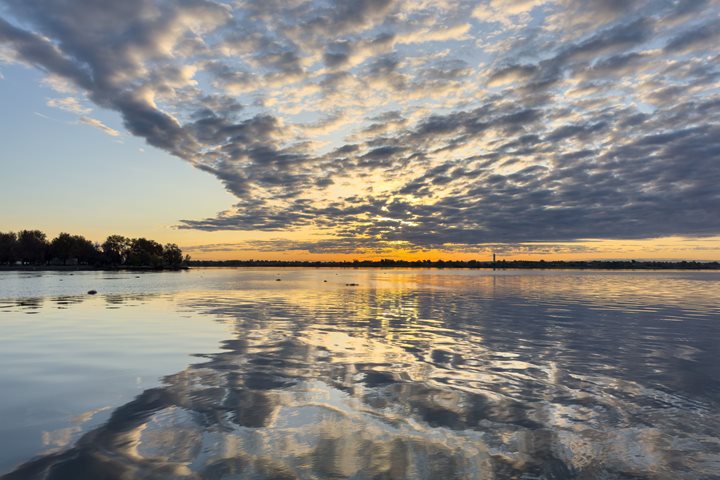Our morning on the National Geographic Sea Bird begins at 5:35 a.m. when a few hardy souls are on the bow as we enter the lock at Little Goose Dam and are lowered 100 feet onto the river below. Soon dawn bathes the buff-colored grasses and brown basalt cliffs in soft light and paints the clouds and sky in lovely pastels.
At 0700 hours our ship eases into the mouth of the Palouse River and drops anchor as a flock of Canada geese fly by, calling as they go. We are soon ready for our morning adventures, one group taking our expedition landing craft up the Palouse River and another riding in a yellow school bus to Palouse Falls.
On the river we cruise slowly upstream, reveling in the beauty of the water and the high canyon walls of sculptured basalt. We see coots and cattails, green-winged teal, and a beaver lodge. We thrill at the sight of golden eagles and a peregrine falcon. Ravens play on the wind.
The bus ride up to Palouse Falls is a lesson in geology and history as Grace, our naturalist/geologist, explains the geologic history and describes various plants along the way, e.g., the story of the tumbleweed and how it came here from the Ukraine. Junius, our historian is full of tales about the area and the surprising history of archaeology here. Palouse Falls is an astonishing sight in this arid landscape as it plunges in a stream of white over a precipice to its dark plunge pool 198 feet below. A cool, clean wind blows across the sagebrush steppe, carrying the fragrance of sagebrush—the scent of the west.
In the afternoon we are all on deck for our passage through the lock at Lower Monumental Dam—all of us that is, except for those who choose the interesting experience of going through the lock in an expedition landing craft! At 1830 hours we reach the confluence of the Snake and Columbia Rivers and steam ahead on the Great River of the West.







